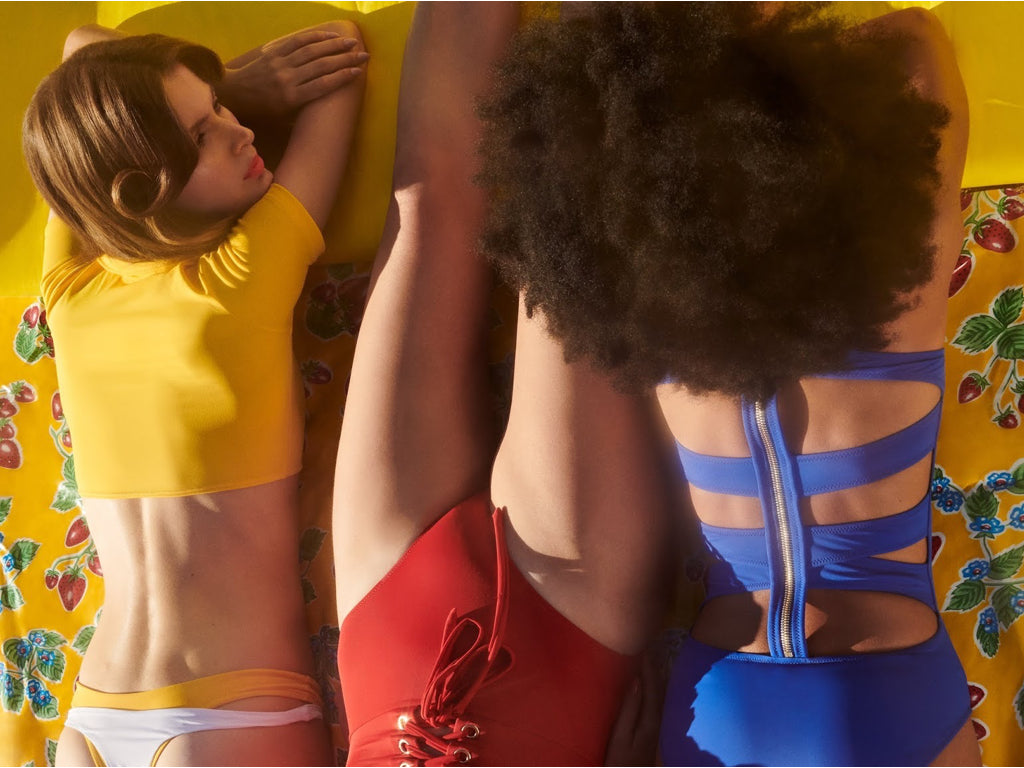Your Cart is Empty
EXTRA 10% OFF AT CHECKOUT. FREE DOMESTIC SHIPPING ON ORDERS $50+.
Tanning can be a huge mood booster, due to exposure to Vitamin D from the sun. Plus, the warmth of the rays on your skin just feels so darn good! It’s hard to argue with that. However, tanning comes with many health risks such as melanoma, premature fine lines and wrinkles, eye damage that can lead to cataracts, heat rash, and most commonly sunburn. It’s difficult for many to weigh the pros and the cons of tanning since the pros, i.e. gorgeous glowing summer skin and lightened hair, are immediately gratified. Nevertheless, the cons are extremely dangerous, and prolonged exposure to the harmful rays of the sun may cost you a few surgeries down the line. We get it! Self-tanner just isn’t the same as the real deal. We all know to wear our sunblock, stay in the shade, and to wear your sunglasses. It goes a bit deeper than that, though. So, here are some tips to help you achieve a natural tan with as little harm as possible.
You’ve probably learned your lesson on more than one occasion when you didn’t apply your sunscreen. Then, maybe you compensated the next time you went out with some SPF 100. When it comes to sunscreen, Broad Spectrum SPF 30 is really the sweet spot-- anything less doesn’t provide optimal protection from UVA and UVB rays, and anything more is actually not as effective as you might think.
Here’s the truth about high SPF: The different level of protection between SPF 30 to 50 and SPF 100 is quite negligible. SPF 30 blocks 96.7% of UVB rays. SPF 50 blocks 98%, and SPF 100 only blocks 1% more than that. This does not take into account UVA rays, which are also harmful and penetrate the skin more deeply. When used correctly and frequently, SPF 30 can provide more than adequate protection. When using higher SPF products, consumers are given a false sense of confidence, which can lead to a higher rate of burning. Also, high SPF products require higher levels of sun-filtering chemicals, which can pose a greater risk to the user. Many areas of the world, such as Australia, Japan, and Europe, cap their SPF levels in their products at 50 because of these and other reasons. Also, a study conducted by Procter & Gamble regarding competitor SPF 100 products showed that this “100” was really anywhere from 37 to 75. Seems fishy, huh? Like previously mentioned, SPF 30 seems like a good sweet spot.
There are a few foods in your diet that can affect how safely you tan. Beta Carotene is an antioxidant that converts to Vitamin A in the body. This is naturally found in lots of fruits and vegetables, and is the component that contributes to many food’s rich colors. You can find it in fresh produce such as carrots, sweet potato, and kale. The intake of Beta Carotene has many benefits, but especially when it comes to the skin. Some studies have shown this compound to reduce skin sensitivity, prevent damage, and even contribute to the skin’s maintenance and appearance. Pairing these foods with healthy fats such as nuts or avocado can also help increase the antioxidant’s absorption.
Lycopene is yet another antioxidant that contributes to the rich color in fruits and veggies. Foods like guava, watermelon, and tomatoes have high lycopene contents, and eating these fruits has been shown to increase the skin’s natural protection against harmful UV rays.
Also, applying certain food oils to the skin, like avocado or coconut oils, can provide an extra bit of hydration and sun protection due to their naturally occurring SPF contents. However, these oils should not completely replace your daily sunscreen. Just use them for an extra boost!



Sun, sand, salt water, and chlorine are all extremely drying for the skin. Without the proper skin care and prep, it’s possible to end up with a flakey or patchy tan. Prepping skin can help your tan last longer.
Prep can be done in the form of daily moisturization or weekly exfoliation. Both are really recommended, but especially when your skin is exposed to the elements the way it is during the summer months. Many people think moisturizing is only essential in the winter, but that's a common misconception. Year-round moisturization will keep your skin looking younger longer and help maintain its elasticity. Moisturizing should take place at least once a day, but especially after your daily shower. And just like the self tanner bottle might say “exfoliate before applying”, the same goes for sun tanning. Gently exfoliate your entire body before tanning to avoid patches of dry skin flaking off, resulting in an uneven tan.
Aloe is one of the best natural moisturizers, and is widely available and affordable. It is also great to use as an aftercare treatment for sunburns, as it has naturally soothing, anti-redness, and anti-inflammatory properties. With the use of aloe, your burn will heal quicker, and your tan will last longer.

